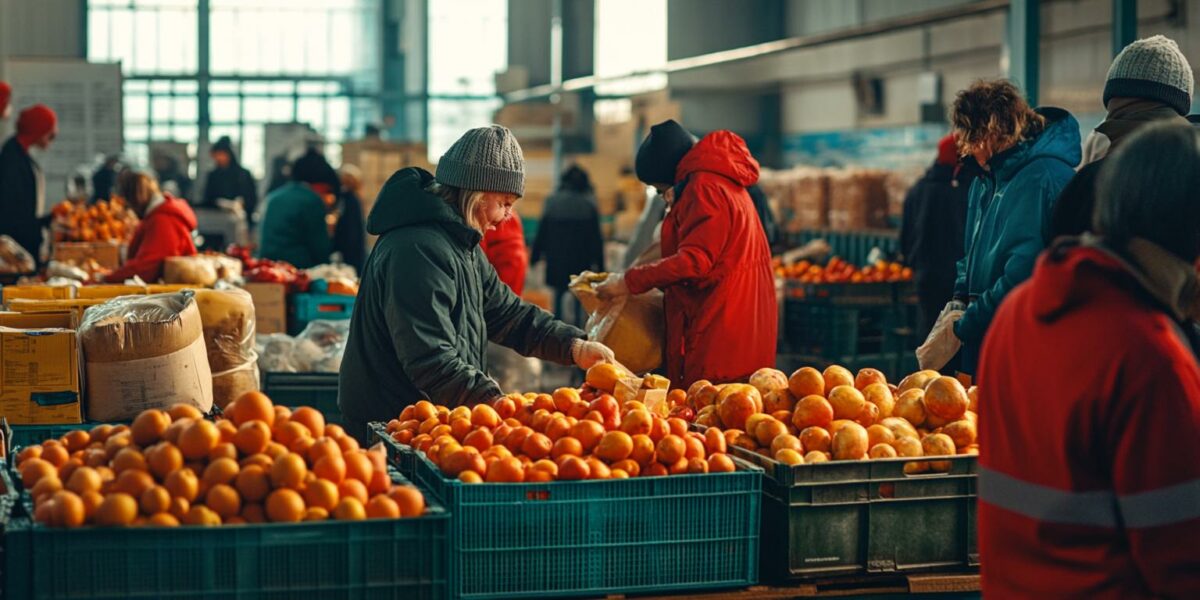The Dual Role of Food Banks
The Global Foodbanking Network’s recent report reveals a staggering 1.7 billion meals served to over 40 million individuals in 2023. This impressive feat also averted 1.8 million metric tons of CO2 emissions. By rescuing food destined for landfills, food banks are tackling both hunger and climate change simultaneously.
High demand for food aid persists, echoing the crisis levels seen during the COVID-19 pandemic. To meet this need, many food banks have invested in agricultural recovery, saving food directly from farms. This initiative not only feeds communities but also reduces waste significantly.
Food banks intercept edible food before it reaches landfills, preventing the emission of harmful greenhouse gases. This dual-purpose approach underscores the critical role food banks play in environmental protection. By reducing food waste, they mitigate methane emissions, a potent climate change driver.
Emily Broad Leib from Harvard Law emphasizes the ongoing necessity for scaling food recovery efforts. With a significant portion of food being unnecessarily wasted, expanding food bank operations becomes crucial. This strategy ensures more food is saved and fewer emissions are produced.
Global Food Waste: A Massive Issue
The United Nations Environment Programme’s analysis highlights that 13 percent of food is lost between producers and retailers, and 19 percent is wasted by retailers, restaurants, and households. The magnitude of this waste is staggering, with households alone discarding 1 billion meals daily.
Food waste contributes to substantial planetary impacts. When food is wasted, the emissions from its production and transportation become unnecessary. Moreover, rotting food in landfills releases methane, a greenhouse gas much more potent than CO2. Reducing food waste is vital for meeting climate goals.
Food banks play a pivotal role in reducing these emissions by rescuing food before it is lost. Lisa Moon of GFN notes their focus on redistribution capacity to meet rising needs. This involves capturing more surplus food and redirecting it to those in need, thus preventing waste.
Key measures to reduce food waste include:
- Better coordination with farmers to redirect surplus food.
- Utilizing technology for “virtual food banking.”
- Increasing the volume of fresh produce redistributed.
These steps ensure that more food reaches people instead of landfills.
Innovative Food Redistribution Techniques
GFN’s approach includes collaborating closely with farmers to redirect surplus food. Surplus food, often unsellable due to aesthetic reasons, is now being channeled to those in need. This method helps in reducing food wastage at the source and provides nutritious options for communities.
Some food banks are skipping the traditional middleman role by directly connecting farmers with beneficiaries. This method, referred to as “virtual food banking,” uses technology to streamline the process. It minimizes unnecessary transportation and storage, making the redistribution process more efficient.
The emphasis on agricultural recovery has led to a significant portion of redistributed food being fresh produce. 40 percent of the food redistributed by GFN members is now fruits and vegetables. This shift not only provides healthier options but also maximizes the impact of rescued food.
GFN’s efforts are validated by the Food Loss and Waste Protocol, which estimates the avoided emissions. Although exact destinations for all surplus food are unknown, most would have ended up as waste. This methodology underscores the importance of food banks in climate mitigation.
Evaluating the Impact
Harvard’s Broad Leib describes GFN’s carbon mitigation estimate as a “good proxy for impact.” Despite possible alternative waste destinations, the majority of food waste still ends up in landfills. As such, GFN’s efforts likely represent a significant reduction in global emissions.
The continuous work of food banks is crucial in the fight against climate change. By expanding food recovery operations and enhancing redistribution mechanisms, they play an essential role in environmental sustainability. Their impact extends beyond feeding the hungry to actively reducing harmful emissions.
The collaboration between food banks and farmers is key. By rescuing edible food and redirecting it to those in need, they prevent food from becoming waste. This process not only addresses food insecurity but also combats climate change by reducing methane emissions.
As the need for food aid remains high, food banks must continue to innovate and adapt. Their ability to capture and redistribute surplus food effectively can make a substantial difference in both human and environmental health. This dual approach ensures a sustainable future for all.



auroraecho
Thnx for sharing this info! Food banks rock!
trinityhorizon1
Can you imagine what else we could achieve if more people joined this effort? 😃
calebprism
Impressive numbers, but what about the food quality?
arianaaurora
Is this sustainable long-term or just a temporary fix?
alexander
1.8 million tons of CO2 is a lot! How do they measure that?
thomasprism
Is there a way to donate directly to support these climate initiatives?
Sophia8
If food banks can do this much, why isn’t the government doing more?
Felix
This is amazing! Keep up the great work, food banks!
connor_quantum
How can local communities support their food banks in these efforts?
hannahumbra
Wow, I had no idea food banks were helping the environment too! 🌍